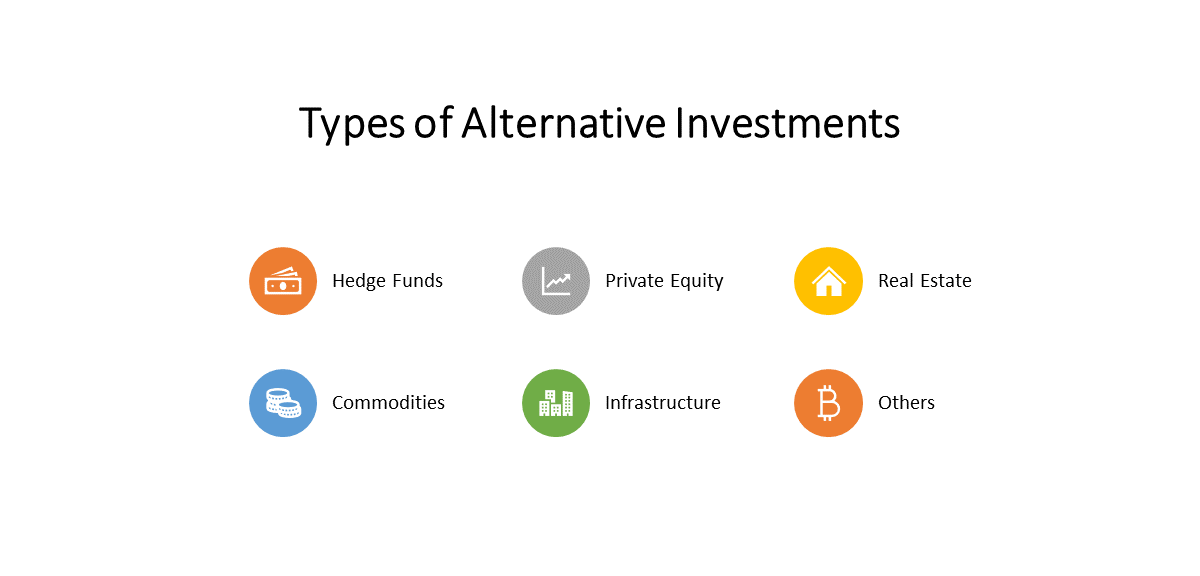LOS B requires us to:
describe hedge funds, private equity, real estate, commodities, infrastructure, and other alternative investments, including, as applicable, strategies, subcategories, potential benefits and risks, fee structures, and due diligence
There is no demarcating criterion to suggest what should be categorized as an alternative investment. It is defined as, ‘anything that cannot be categorized as a traditional investment, should be termed an alternative investment’.
However, some of the broad categories of alternative investments are as follows:

Hedge Funds
1. Hedge funds are private investment vehicles, typically structured as partnerships that manage the portfolio of securities or derivatives.
2. The hedge funds often make use of short positions and leverage to amplify their returns.
3. When it comes to returns, the hedge fund managers are mainly concerned about the alpha part of it. They are usually looking for absolute returns.
Private Equity Firms
1. Private equity firms are institutional investors who mainly invest in either the private companies or the listed companies with the intention of taking them private.
2. A majority of private equity activity involves leveraged buyouts. This involves using the borrowed funds to finance the investments.
3. Another form of private equity investment is venture capital. Here, investment is made in small-scale or early-stage companies, with huge growth potential.
Real Estate Investments
1. Real Estate is the immovable property consisting of land, buildings, natural resources, etc. including both residential as well as commercial assets.
2. Investments in real estate can be made both directly as well as indirectly.
3. Direct investment involves investment in land, building, timberland, farmland, mineral shores, etc.
4. Indirect investments in real estate are made through securitization, which has an impact on broadening the definition of real estate.
5. The indirect investment in real estate can be in the form of:
a. Private commercial real estate (both in form of equity as well as debt). Here investment in equity or debt of the entities is done who are the owners of real estate. Thus, the investor has an indirect claim over the real estate property.
b. Public real estate equity. Such investment can be made through Real Estate Investment Trusts (REITs) etc. Here, the investors hold the shares of the companies that hold the real estate.
c. Public commercial real estate debts can be in form of Commercial Mortgage-Backed Securities (or CMBS).
Commodities
1. Commodities have long been a part of the investment portfolio of investors across the different groups, but it does not form a major portion of investments. Investment in commodities can be done either directly or indirectly.
2. Direct investment can be done through holding the assets physically.
3. Indirect investment can be done by investing in the commodity-based business, through investments in futures and funds based on commodity indices.
Infrastructure
1. Infrastructure is the real capital-intensive, long-lived assets intended for public use. Traditionally, providing infrastructure facilities to the public was considered a government’s business. But, off-lately governments have privatized this sector as well.
2. Direct investment in infrastructure can be made by investing in the projects that are involved in building toll roads, public transportation, energy generation projects, etc.
3. Indirect investment in the infrastructure sector can be made through investing in the companies involved in providing infrastructure facilities.
Others
1. Other investment intangible assets can be made through the purchase of some tangible as well as intangible assets.
2. The tangible investments involve jewelry, artifacts, paintings, fine wine, automobiles, etc.
3. And, intangibles include patents, copyrights, etc.